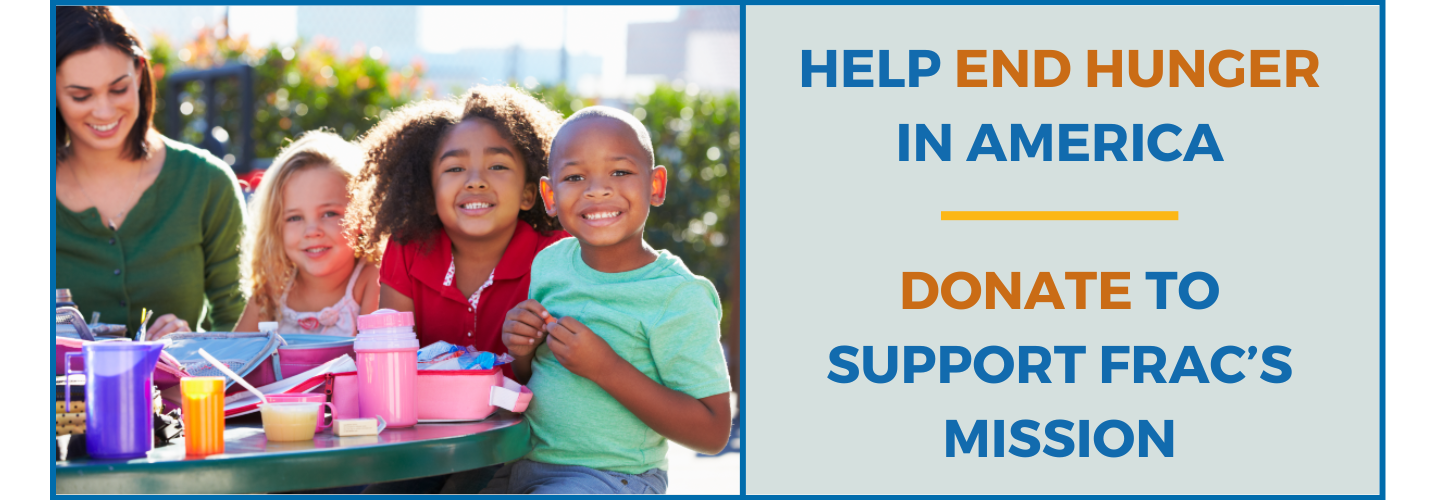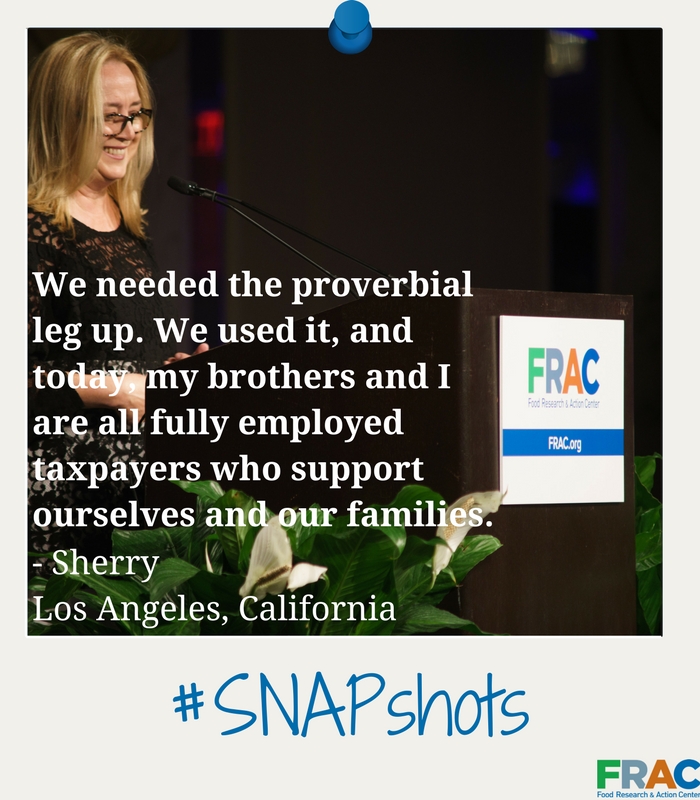
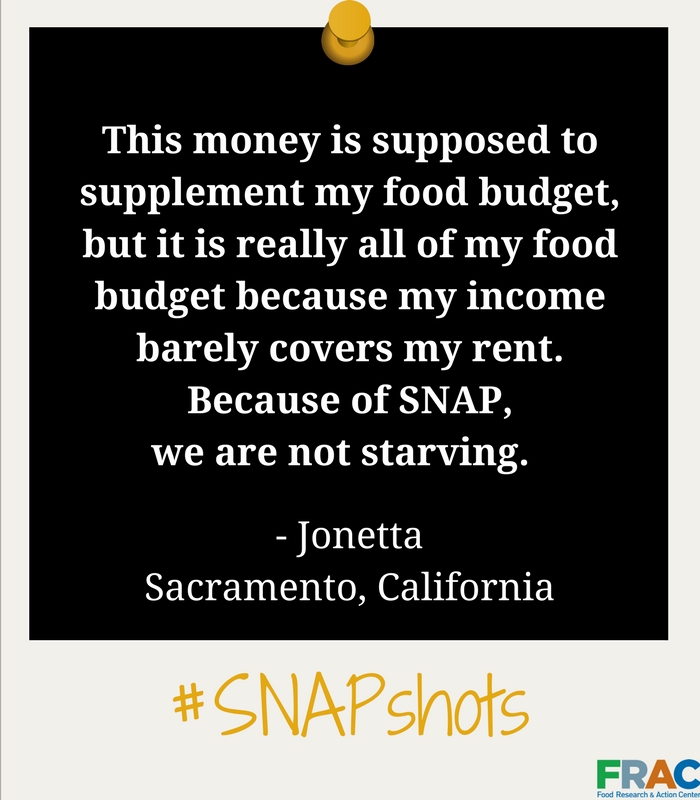
Resources

Make America Healthy Again Commission: Improve Child Health by Protecting and Strengthening the Federal Nutrition Programs
Learn More
National SNAP Fact Sheet
Learn More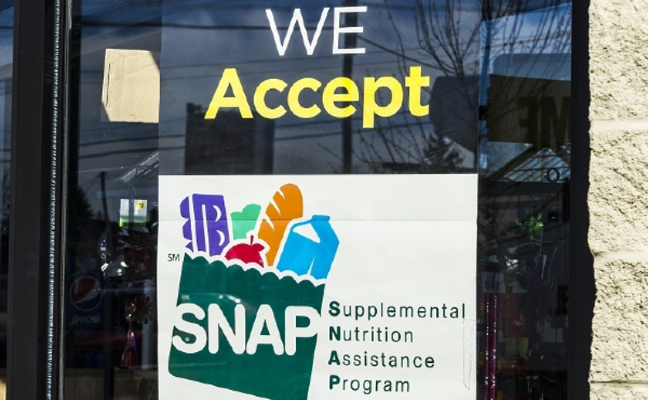
Challenges in Researching the Diets of SNAP Recipients
Learn More
SNAP State-by-State Fact Sheets
Learn More
CEP State-by-State Fact Sheets
Learn More
SNAP Challenge 2025 Toolkit
Learn More
Community Eligibility: The Key to Hunger-Free Schools, School Year 2023 – 2024
Learn More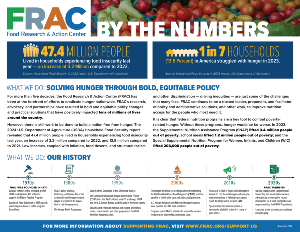
FRAC by the Numbers 2024
Learn More
Hunger & Poverty in America
Explore the Data
Summer EBT Resource Center
Learn more
Healthy School Meals for All
Learn More
Expanded Child Tax Credits: A Transformational Opportunity to Help Families Put Food on the Table Research Brief
Learn more
Budget Reconciliation 101
Explore our report
News
FRAC Chat
Annually, the U.S. Department of Agriculture (USDA) issues a report on the characteristics of households and individuals participating in the Supplemental Nutrition Assistance Program (SNAP). The most recent report released in April provides details about fiscal year 2023 program participants, and critical insights for lawmakers, advocates, and stakeholders, while simultaneously pushing back against harmful narratives that have been perpetuated about households participating in SNAP.
Senate Republicans continue to debate deep cuts to basic needs services as part of a larger plan to fund President Trump’s tax breaks for the ultra-wealthy. On Sunday, parliamentary rulings targeted two Supplemental Nutrition Assistance Program (SNAP) provisions, the measures to shift costs to states and to bar humanitarian-based immigrants from receiving SNAP benefits. On Tuesday, the Senate Agriculture Committee issued a press release incorrectly claiming the parliamentarian had ruled in favor of its updated language to allow its cost shift provision. That release and a related social media post celebrating a GOP “win” were promptly taken down. On Wednesday, the committee released revised language that attempts to comply with procedural requirements but is equally harmful — it keeps the state cost shift with some amendments and exempts other humanitarian-based immigrants. (See table comparison). Whether this amended version will pass muster with the parliamentarian remains to be seen.
The Food Research & Action Center’s (FRAC) recent report, Community Eligibility: The Key to Hunger-Free Schools, highlights Community Eligibility Provision (CEP) adoption in the 2024– 2025 school year and showcases the significant growth in CEP utilization by schools and school districts around the country since becoming available nationwide over a decade ago. CEP allows high-poverty schools to offer all students breakfast and lunch at no charge regardless of household income, thus reducing stigma in the cafeteria and increasing participation in school meal programs. CEP supports students and their families, by stretching household food budgets, combatting childhood food insecurity, and supporting student health and learning. Furthermore, CEP streamlines the administration of school meal programs, reducing administrative burdens on school nutrition departments, and freeing staff time so school nutrition professionals can focus on their mission: serving students delicious and nutritious school meals.
Recent Publications & Data
See More Resources- Fact Sheet
The Supplemental Nutrition Assistance Program (SNAP) helps millions of families put food on the table every month. It provides women, LGBTQIA+ people, and their families with critical nutrition assistance that supports their health and well-being.
Yet the House-passed budget reconciliation bill and Senate proposal seek to make wide-reaching cuts to SNAP, including by expanding time limits. Learn how these proposals would harm women, LGBTQIA+ people, and families in a new resource from FRAC and the National Women’s Law Center.
Read the fact sheet - Report
More schools and school districts are offering free school meals to all students through the Community Eligibility Provision (CEP), according to FRAC’s latest report, Community Eligibility: The Key to Hunger-Free Schools. This report analyzes CEP adoption—nationally and for each state and the District of Columbia—in the 2024–2025 school year.
Read the report - Report
In February 2025, the president signed an Executive Order established the Make America Healthy Again (MAHA) Commission. The Commission is tasked with investigating and addressing the root causes of America’s escalating health crisis, with an initial focus on childhood chronic diseases. Within 180 days, the Commission will use the findings from the assessment to create a strategy aimed at improving the health of America’s children.
Read the report here - Fact Sheet
The Supplemental Nutrition Assistance Program (SNAP) is the nation’s first line of defense against hunger, helping 42.6 million people in the U.S. put food on the table. As food insecurity and food prices continue increasing, protecting and strengthening SNAP is more important than ever. Discover SNAP’s impact across the U.S. in FRAC’s national SNAP fact sheet.
Discover SNAP's Impact





